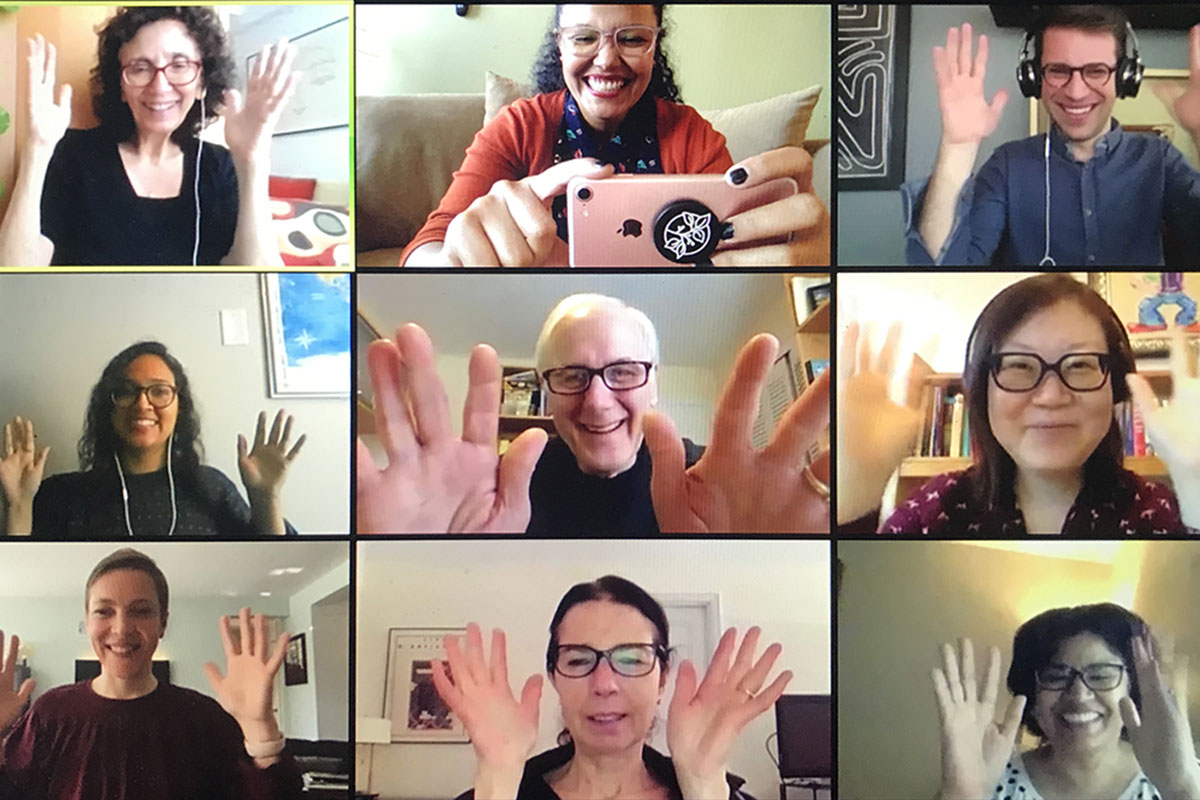If you want to get a sense of how life in the world of Teachers College has changed since the College moved into remote work mode, consider this:
Between January 20th and March 10th — that is, before the COVID pandemic hit New York City — TC held an average of 484 Zoom meetings per week.
From March 11th through May 1st, that number jumped to 4,287 Zoom meetings weekly — an increase of 786 percent.
About a quarter of those were classes — an increase of about 2,227 percent over pre-COVID days.
Being able to make such a pivot requires prior planning — and a lot of hand-holding when the time comes. Score high marks for TC Information Technology (TCIT), headed by Chief Information Officer Daniel Aracena, on both counts. TCIT had done its “continuity planning” — envisioning the “what if” scenarios in which the College would need to be able to keep functioning even if faculty, students and staff couldn’t be on campus. And within TCIT, it fell to the Office of Academic Technology Services (ATS) to provide the basic technology training.
“We’re the ‘teach them how to fish’ department,” says Debbie Beaudry, ATS Director, says of her group. “We put infrastructure in place, and our nine part-time student technology fellows then help faculty get up to speed with Canvas and Zoom. Our fellows worked with faculty members night and day to provide tech and moral support during the early days of the crisis.”

TEACHING THEM HOW TO FISH Beaudry and her team worked with faculty members night and day early on in the crisis. (Photo: TC Archives)
Among the contributions by ATS and other areas of TCIT:
- ATS offered daily webinars about using Zoom to teach and using Zoom for remote office hours. All TCIT staff were encouraged to attend so everyone in the department would be ready to assist a faculty member or student with using Zoom.
- The Office of Media and Video Services introduced a Zoom “check-in service” for faculty. Each day, faculty members who requested it would provide the date, time, and link to their Zoom class. Media and Video Services team members would go to the start of each session to be sure the faculty member was able to get into the Zoom session, connect their mic and webcam, and share their screen.
- When TC announced that nearly all employees would work from home until further notice, the Service Desk searched the College for all available laptops and IT staff even drove around to stores to buy them — in part to ensure that faculty and staff with older computers at home would be able to run Zoom. A handful of IT staff came on campus to get the laptops ready and schedule time to have faculty and staff come pick them up.
- ATS worked with many students and faculty who needed help conducting remote dissertation defenses, also creating a webpage to help guide them through the process.
Ultimately, it’s not about the technology. It’s about making it possible for people to do their work and feel connected.
— Debbie Beaudry
Even though she’s a technology specialist, Beaudry, who earlier in her career served as a public school teacher in Florida, says “ultimately, it’s not about the technology. It’s about making it possible for people to do their work and feel connected. I’m so grateful we had Zoom in place prior to the crisis, and that when we purchased it, we made sure students had accounts, too so that they could schedule meetings and work in groups, and that we took the right steps to ensure accessibility for users with disabilities. Because in the beginning, especially, Zoom really kept people connected.”

